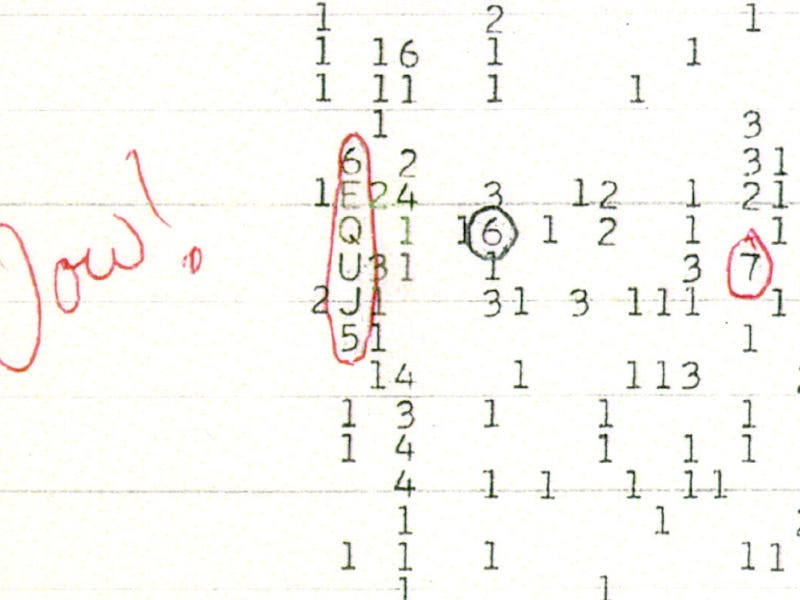Scientists Claim Famous 1977 'Wow!; Signal May Have Been Comets, Not Aliens
Still, there's plenty we don't know about the transmission.

Those of us counting down the days until humanity acknowledges its first encounter with extra-terrestrial life may have to wait a bit longer thanks to Astronomer Antonio Paris who is proposing that the famous 1977 “Wow!” signal may have been due to a pair of passing comets, not an intergalactic civilization. The signal, which put hairs on end several decades ago, had remained a conundrum for an entire generation. Now, Paris claims to have a bead on a non-alien culprit — two actually.
The two comets 266P/Christensen and P/2008 Y2 (Gibbs) were only discovered in the past decade and should have been passing through the general area that emitted the Wow! signal at the time it was recorded. The mysterious radio waves also came through at a wavelength that hydrogen atoms frequently absorb and emit, indicating to some that a distant civilization may be trying to hint at their existence in a language we would understand. As for the unique frequency, Paris thinks the hydrogen that the comets release as they cut through space might be to blame.
The original signal was recorded over 72 seconds on August 15, 1977 on the Big Ear radio telescope at the Ohio State University. Astronomer Jerry Ehman inadvertently coined the mysterious signal’s name when he wrote ‘Wow!’ in sharp, red ink beside data indicating a signal of some kind had been received.
Luckily, Paris also suggests that it’s relatively easy to check whether he is right — scope out the region again when the comets pass by in 2017 and 2018. We should be able to tell whether the comets produce a signal with the right frequency that is as powerful as the “Wow!”